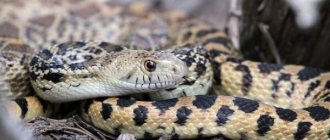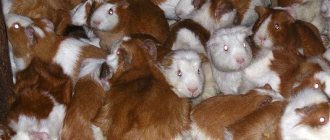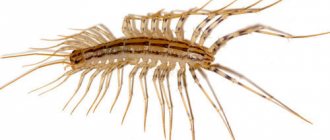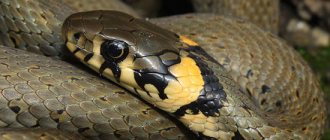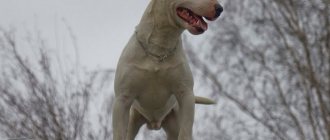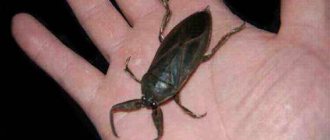Most living organisms eat organic food, this is the specificity of their life activity on our planet. Among this food are plants, the meat of other animals, their products and dead matter ready for decomposition. The process of nutrition itself occurs differently in different species of plants and animals, but so-called food chains are always formed. They transform matter and energy, and nutrients can thus pass from one creature to another, carrying out the cycle of substances in nature.
Features and examples of food chains in animals
Every living creature on our planet needs nutrition for normal development.
Nutrition is the process of supplying energy and necessary chemical elements to a living organism. The source of food for some animals is other plants and animals. The process of transferring energy and nutrients from one living organism to another occurs by eating one by another. Some animals and plants serve as food for others. Thus, energy can be transferred through several links. The set of all links in this process is called the food chain . An example of a food chain can be seen in the forest, when a bird eats a worm and then itself becomes food for a lynx.
All types of living organisms, depending on the place they occupy, are divided into three types:
Fox cunning
Sometimes you can notice in fox behavior actions reminiscent of episodes from fairy tales . For example, the Fox approaches the black grouse gathered at a lek in an open clearing in an amazingly cunning way: she pretends that she is not at all interested in them, and does not even look in their direction; sometimes she will lie down and take a nap, and the birds lose their vigilance and go about their business - the Fox is a very good actress .
Meanwhile, Patrnkeevna will move a meter or two towards them. Lisa spares no time in playing: sometimes such a performance lasts an hour or two. Then a few lightning-fast jumps - and the hunt is victoriously completed.
Producers
Producers are living organisms that independently produce nutrients. For example, plants or algae. To produce organic substances, producers can use sunlight or simple inorganic compounds such as carbon dioxide or hydrogen sulfide. Such organisms are also called autotrophic. Autotrophs are the first link of any food chain and form its basis, and the energy received by these organisms supports each subsequent link.
Consumers
Consumers are the next link . The role of consumers is played by heterotrophic organisms, that is, those that do not produce organic substances on their own, but use other organisms as food. Consumers can be divided into several levels. For example, the first level includes all herbivores, some types of microorganisms, as well as plankton. Rodents, hares, moose, wild boars, antelopes and even hippos - all belong to the first level.
The second level includes small predators, such as wild cats, minks, ferrets, plankton-eating fish, owls, and snakes. These animals serve as food for third-level consumers - larger predators. These are animals such as fox, lynx, lion, hawk, pike, etc. Such predators are also called apex predators. Top predators do not necessarily eat only those at the previous level. For example, a small fox can become prey for a hawk, and a lynx can hunt both rodents and owls.
Decomposers
These are organisms that process animal waste products and their dead flesh into inorganic compounds. These include some types of fungi and decay bacteria . The role of decomposers is to close the cycle of substances in nature. They return water and simple inorganic compounds to the soil and air, which producers use for their life activities. Decomposers process not only dead animals, but also, for example, fallen leaves that begin to rot in the forest or dry grass in the steppe.
What does the wolf that lives in the steppe eat?
Steppenwolves quite often raid melon fields. This is explained not by stylish hunger, but by thirst. Predators living in this area are especially in need of regular and plentiful watering. Melons and watermelons help them quench their thirst.
The favorite food of the predator in the steppe is saigas and goitered gazelles. With the onset of winter, the wolf's diet changes. It becomes more difficult to obtain food, so steppe wolves most often hunt in packs. They attack hares, roe deer and wild boars.
Types of food chains: examples in nature
They are divided into pasture and detritus. Pasture food chains are common in steppes and the world's oceans. The beginning of these chains are producers. For example, grass or algae. Next come first-order consumers, for example, herbivores or baby fish and small crustaceans that feed on algae. Next in the chain are small predators, such as foxes, minks, ferrets, perches, and owls. Superpredators, such as lions, bears, and crocodiles, complete the chain. Superpredators are not prey for other animals, but after their death they serve as food material for decomposers. Decomposers participate in the process of decomposition of the remains of these animals.
Detrital food chains originate from decaying organic matter. For example, from decaying leaves and remaining grass or from fallen berries. Such chains are common in deciduous and mixed forests. Fallen rotting leaves - woodlice - raven. Here is an example of such a food chain. Most animals and microorganisms can simultaneously be links in both types of food chains. An example of this is the woodpecker feeding on bugs that decompose dead wood. These are representatives of the detrital food chain. And the woodpecker itself can become prey for a small predator, for example, a lynx. Lynx can also hunt rodents - representatives of the pasture food chain.
Any food chain cannot be very long. This is due to the fact that only 10% of the energy of the previous level is transferred to each subsequent level. Most of them consist of 3 to 6 links.
Common fox - Food
He eats wild berries and fruits. Answer: badger is omnivorous
In winter, the fox catches mice and sometimes partridges under the snow. Sometimes she hunts for hares. But hares run faster than a fox and can run away from it. In winter, foxes come close to human settlements and attack poultry. Answer: carnivorous fox
At the end of summer and autumn, the squirrel collects mushrooms. She pins them on tree branches so that the mushrooms dry out. The squirrel also stuffs nuts and acorns into hollows and cracks. All this will be useful to her during the winter lack of food. Answer: squirrel is herbivorous
The wolf is a dangerous animal. In summer he attacks various animals. It also eats mice, frogs, and lizards. Destroys bird nests on the ground, eats eggs, chicks, and birds. Answer: carnivorous wolf
The bear breaks apart rotten stumps and looks for fatty larvae of woodcutter beetles and other insects that feed on wood. He eats everything: he catches frogs, lizards, in a word, whatever he comes across. Digs plant bulbs and tubers from the ground. You can often meet a bear in berry fields, where he greedily eats the berries. Sometimes a hungry bear attacks moose and deer. Answer: the bear is omnivorous
Based on the texts from the previous assignment, compose and write down several power circuits.
1. strawberry - slug - badger 2. tree bark - hare - fox 3. grain - bird - wolf 4. wood - beetle larvae - woodcutter - bear 5. young shoots of trees - deer - bear
Draw a food chain using the pictures.
Who eats the fox?
The fox is a very fast, fierce and cunning predator. But this does not mean that she herself does not become a victim of stronger predators.
There are many different predators that consider it a good meal. Since the fox is medium in size, this makes it quite easy prey for many large animals. At the same time, she is not too difficult to defeat.
And in today’s article we will talk about who could be a potential enemy for this animal.
Asking the question “Who eats the fox?” you immediately need to answer - lynx. The lynx is an animal that lives next to the fox. These are very experienced hunters with powerful jaws. Fox is a common food for this species of cat. In most cases, when these two animals meet, the fox dies and becomes food for the stronger cat.
Chapter I. FOREST GNOME
In the small Swedish village of Vestmenheg, there once lived a boy named Nils. In appearance - a boy like a boy.
And there was no trouble with him.
During lessons, he counted crows and caught twos, destroyed birds' nests in the forest, teased geese in the yard, chased chickens, threw stones at cows, and pulled the cat by the tail, as if the tail were a rope from a doorbell.
He lived like this until he was twelve years old. And then an extraordinary incident happened to him.
One Sunday, father and mother gathered for a fair in a neighboring village. Nils couldn't wait for them to leave.
“Let’s go quickly! - Nils thought, looking at his father’s gun, which was hanging on the wall. “The boys will burst with envy when they see me with a gun.”
But his father seemed to guess his thoughts.
- Look, not a step out of the house! - he said. - Open your textbook and come to your senses. Do you hear?
“I hear you,” Nils answered, and thought to himself: “So I’ll spend Sunday studying!”
“Study, son, study,” said the mother.
She even took out a textbook from the shelf herself, put it on the table and pulled up a chair.
And the father counted out ten pages and strictly ordered:
“So that he knows everything by heart by the time we return.” I'll check it myself.
Finally, father and mother left.
“It’s good for them, they walk so merrily! - Nils sighed heavily. “I definitely fell into a mousetrap with these lessons!”
Well, what can you do! Nils knew that his father was not to be trifled with. He sighed again and sat down at the table. True, he was looking not so much at the book as at the window. After all, it was much more interesting!
According to the calendar, it was still March, but here in the south of Sweden, spring had already managed to outdo winter. Water ran merrily in the ditches. The buds on the trees have swelled. The beech forest straightened its branches, numb in the winter cold, and now stretched upward, as if it wanted to reach the blue spring sky.
And right under the window, chickens walked with an important air, sparrows jumped and fought, geese splashed in muddy puddles. Even the cows locked in the barn sensed spring and mooed loudly, as if asking: “You-let us out, you-let us out!”
Nils also wanted to sing, and scream, and splash in puddles, and fight with the neighboring boys. He turned away from the window in frustration and stared at the book. But he didn't read much. For some reason, the letters began to jump before his eyes, the lines either merged or scattered... Nils himself did not notice how he fell asleep.
Who knows, maybe Nils would have slept all day if some rustling had not woken him up.
Nils raised his head and became wary.
The mirror that hung above the table reflected the entire room. There is no one in the room except Nils... Everything seems to be in its place, everything is in order...
And suddenly Nils almost screamed. Someone opened the lid of the chest!
The mother kept all her jewelry in the chest. There lay the outfits that she wore in her youth - wide skirts made of homespun peasant cloth, bodices embroidered with colored beads; starched caps as white as snow, silver buckles and chains.
Mother did not allow anyone to open the chest without her, and she did not let Nils come close to it. And there’s nothing to even say about the fact that she could leave the house without locking the chest! There has never been such a case. And even today - Nils remembered this very well - his mother returned from the threshold twice to pull the lock - did it click well?
Maybe while Nils was sleeping, a thief got into the house and is now hiding somewhere here, behind the door or behind the closet?
Nils held his breath and peered into the mirror without blinking.
What is that shadow there in the corner of the chest? Here it moved... Now it crawled along the edge... A mouse? No, it doesn't look like a mouse...
Nils couldn't believe his eyes. There was a little man sitting on the edge of the chest.
There are two subspecies of the Arctic fox: white and blue. It all depends on the color of the coat. The fur coat of polar foxes is ideal for camouflage. In winter these animals are white, and in summer they are black or brown.
Wolves
Despite the fact that he, like the fox, is a canine, that is, essentially, relatives, he will still hunt it. Since wolves live in a pack, and it consists of a large number of individuals, they can move around their prey from different directions. They begin to move towards the prey, forming a narrow circle, so that the victim has no opportunity to escape.
Since one, even an adult fox, will not be enough to feed all members of the pack, wolves will begin to hunt for more animals.
Who eats mice
He seemed to have stepped out of a Sunday calendar picture. On his head is a wide-brimmed hat, a black caftan is decorated with a lace collar and cuffs, stockings at the knees are tied with lush bows, and silver buckles glitter on red morocco shoes.
“But it’s a gnome! - Nils guessed. “A real gnome!”
Mother often told Nils about gnomes. They live in the forest. They can speak human, bird, and animal. They know about all the treasures that were buried in the ground at least a hundred or a thousand years ago. If the gnomes want it, the flowers will bloom in the snow in winter; if they want it, the rivers will freeze in the summer.
Well, there’s nothing to be afraid of the gnome. What harm could such a tiny creature do?
Moreover, the dwarf did not pay any attention to Nils. He seemed to see nothing except a velvet sleeveless vest, embroidered with small freshwater pearls, that lay in the chest at the very top.
While the gnome was admiring the intricate ancient pattern, Nils was already wondering what kind of trick he could play with his amazing guest.
It would be nice to push it into the chest and then slam the lid. And here's what else you can do...
Without turning his head, Nils looked around the room. In the mirror she was all there in front of him in full view. A coffee pot, a teapot, bowls, pots were lined up in strict order on the shelves... By the window there was a chest of drawers filled with all sorts of things... But on the wall - next to my father's gun - was a fly net. Just what you need!
Nils carefully slid to the floor and pulled the net off the nail.
One swing - and the gnome hid in the net like a caught dragonfly.
His wide-brimmed hat was knocked to one side, his feet were entangled in the skirts of his caftan. He floundered at the bottom of the net and waved his arms helplessly. But as soon as he managed to rise a little, Nils shook the net, and the gnome fell down again.
“Listen, Nils,” the dwarf finally begged, “let me go free!” I'll give you a gold coin for this, as big as the button on your shirt.
1
Food chain in the forest. General concepts and examples
Most living organisms eat organic food, this is the specificity of their life activity on our planet. Among this food are plants, the meat of other animals, their products and dead matter ready for decomposition. The process of nutrition itself occurs differently in different species of plants and animals, but so-called food chains are always formed. They transform matter and energy, and nutrients can thus pass from one creature to another, carrying out the cycle of substances in nature.
Features of fox meat
Fox meat is very tough and requires a long cooking time. Of course, the fox is edible, like any other animal, but this product is specific and may not be to the taste of every person. Since the fox is a very active, mobile predator, it has practically no fat, so its meat is dry and dense. Like any other wild animal meat, it has a strong, unpleasant aroma, which is especially pronounced during cooking. It is also worth keeping in mind that the fox feeds mainly on rodents, which are carriers of many diseases and parasites. Therefore, its meat must undergo long-term heat treatment. When working with fox meat, it is advisable to use rubber gloves to avoid infection with helminths.
The Walmart supermarket chain was involved in a scandal: particles of fox meat and fur were found in donkey meat supplied from China.
Food chain in the forest
Forests of various kinds cover quite a lot of land surface. These are lungs and a tool for cleansing our planet. It is not for nothing that many progressive modern scientists and activists today oppose mass deforestation. The food chain in the forest can be quite diverse, but, as a rule, it includes no more than 3-5 links. In order to understand the essence of the issue, let us turn to the possible components of this chain.
Producers and consumers
- The first are autotrophic organisms that feed on inorganic food. They take energy and matter to create their own bodies, using gases and salts from their environment. An example is green plants that get their food from sunlight through photosynthesis. Or numerous types of microorganisms that live everywhere: in the air, in the soil, in the water. It is the producers who, for the most part, constitute the first link in almost any food chain in the forest (examples will be given below).
- The second are heterotrophic organisms that feed on organic matter. Among them are those of the first order that directly provide nutrition through plants and bacteria, producers. Second order - those who eat animal food (predators or carnivores).
Herbivores
Animals that feed on plant foods are found in abundance in various forests. Of course, the tropical forest, for example, is very different in its content from the lands of the middle zone. The jungle is home to various species of animals, many of which are herbivores, which means they form the second link in the food chain, feeding on plant foods. From elephants and rhinoceroses to barely visible insects, from amphibians and birds to mammals. So, in Brazil, for example, there are more than 700 species of butterflies, almost all of them are herbivorous.
Methods for preparing fox meat
Traditionally, fox meat is soaked for about 12 hours in a solution of salt and vinegar. This will help remove odor and soften the fibers. The solution is prepared at the rate of 1 tsp. for 150 ml of water. There are several well-known recipes for preparing fox meat. The first of them suggests stewing it in a saucepan. First you need to simmer the onions and carrots in olive oil with bay leaf, salt, pepper and lemon juice. Then the pre-soaked meat is added to the pan. Then add the zucchini and simmer for about 4 hours. At the end of cooking, add well-beaten eggs to thicken the gravy. In general, fox meat likes to simmer for a long time.
According to the second recipe, the meat must be cut into small pieces and fried with onions, tomatoes and spices. During the cooking process, when the meat is already quite tender, you can add apple cider vinegar to soften the texture of the meat. Herbs such as rosemary, thyme and dill are used to add a pleasant aroma. Dishes made from fox meat are best eaten hot. It tastes a little like venison and has a subtle minty flavor.
Source: www.kakprosto.ru
Predators or carnivores
They are called that because they eat flesh, feeding on the meat of other animals. They occupy a dominant position in the food chain, often being the final link. In our forests these are foxes and wolves, owls and eagles, sometimes bears (but in general they are omnivores that can eat both plant and animal foods). A food chain can involve either one or several predators that eat each other. The final link, as a rule, is the largest and most powerful carnivore. In the middle forest, this role can be performed, for example, by a wolf. There are not too many such predators, and their population is limited by the nutritional base and energy reserves. Since, according to the law of conservation of energy, during the transition of nutrients from one link to the next, up to 90% of the resource can be lost. This is probably why the number of links in most food chains cannot exceed five.
Is it possible to eat wolf meat, what could be the danger?
Most often, wolves and foxes are hunted: for the thrill of the hunt or in the name of preserving the number of small animals (for example, hares). However, hunters are in no hurry to cook and eat their meat. Wolves and foxes remain, although quite honorable, still purely symbolic trophies and backgrounds for photographs. Wolf and fox carcasses are subsequently used, at best, for baiting dogs. In the worst case, they remain lying on the ground until they become food for crows.
So can the meat of wolves and foxes be safely eaten? The situation with the fox is this: in most regions, almost all of it is infected with a deadly infection - rabies. As for the wolf, hardly anyone has heard of a massive rabies epidemic among the wolf population. Why is it not considered edible? After all, for example, do Koreans eat dogs? And the bear, although an equally predatory inhabitant of our forests, has long been on the pages of the hunters’ cookbook. However, even outside the hunting environment, bear meat has many admirers. But they still don’t eat wolves. Why? Let's try to figure this out.
Unpleasant smell of wolf meat
When butchering a wolf or fox, the hunter’s nose is immediately hit by a not-so-pleasant “aroma.” It's a cross between what stale meat smells like and bad breath. Already at this stage, most hunters completely lose all desire to try this meat. Among hunters there are several opinions about the origin of such an unpleasant odor. Some people believe that the rancid fat of a wolf smells so unpleasantly, and if it is removed immediately when cutting the carcass, the meat will get rid of the stench.
Others say that this is what wolf meat itself smells like. They say this is because of the gray predator’s lifestyle: it constantly runs, sweats and eats whatever it can, not even disdaining carrion. Therefore, excess sweat and old salts accumulate in wolf meat. In any case, wolves do not smell in the most pleasant way during the butchering process. It is because of this “aroma” that the hunter and his family somehow don’t really want to eat such meat. However, the smell is not the only reason why people are in no hurry to eat wolf meat.
Trichinosis and echinococcus
The wolf is not just a carrier, but also the final host of two dangerous parasites - Trichinella and Echinococcus. They are extremely dangerous both for the animal itself and for humans. As for echinococcus, it is not difficult to extract an adult tapeworm from a wolf heart or, for example, a liver. However, the problem is that a worm does not exist on its own. Surely the entire body of the wolf is already infected with its eggs and larvae. They are visible only under a powerful microscope and are not easy to recognize even for a specialist. Infection will occur immediately after eating such meat. And although the disease caused by echinococcus, based on the symptoms, is not fatal, it does not bode well for the body. The main thing is that a person may not even be aware of his illness for a long time.
If the wolf does not carry echinococcal parasites in itself so often, then trichinella are almost obligatory inhabitants that infect wolf meat. A parallel has long been drawn: foxes in some regions are completely sick with rabies, and wolves are infected with trichinosis. Cases of infection are constantly recorded here and there when checking wolf meat at the SES. Such meat is unsuitable for food - it is simply thrown away. A person can easily become ill with trichinosis, but this disease is very dangerous and usually occurs acutely. A person who has eaten “sick” meat has a sharp rise in temperature to 40°C, and symptoms of severe poisoning of the body are observed.
The wolf himself, in fact, is not to blame for anything. These diseases, both echinococcus and trichinosis, initially infect its prey (small and large ungulates). Then the wolf, having consumed their meat, becomes infected himself, only in a more severe form. In ungulates, the meat contains only eggs of dangerous helminths, and already in the wolf’s body they become adult worms and begin to lay new eggs themselves. The wolf becomes an “incubator” for more and more parasites, gradually killing itself.
So is it possible to eat wolf meat?
Rather yes than no. Of course, under certain conditions it is better to refuse wolf meat. For example, if a wolf is shot in an unknown location, and there is no way to check the meat for parasites. You should also not try to clean contaminated meat from Trichinella on your own - it is useless and stupid. It is worth knowing, however, that the meat of young wolves is clean - it does not contain echinococcus, trichinella, or other helminths. It is very edible and tastes good. The main thing is to know the places where “pure” wolves are found. Experienced hunters always know the permanent places where wolves settle. In the spring they go there for wolf cubs and young first-year wolves. They are most often consumed as food without fear of infection.
Many draw an analogy with the eating of dogs by the same Koreans. However, you need to keep in mind that not all dogs are butchered for meat. Stray mongrels and old chain dogs are not suitable for these purposes. True Koreans raise their dogs on special farms and feed them with special feed. The meat of such dogs is quite “edible” and even tasty. Same with wolves. A young wolf, living in clean lands and not having time to pick up any nasty things like trichinosis, is very suitable for food.
Scavengers
They feed on the remains of other organisms. Oddly enough, there are also quite a lot of them in the natural forest: from microorganisms and insects to birds and mammals. Many beetles, for example, use the corpses of other insects and even vertebrates as food. And bacteria are capable of decomposing the dead bodies of mammals in a fairly short time. Scavenger organisms play a huge role in nature. They destroy matter, converting it into inorganic substances, releasing energy, using it for their life activity. If it were not for scavengers, then, probably, the entire earthly space would be covered with the bodies of animals and plants that have died throughout time.
